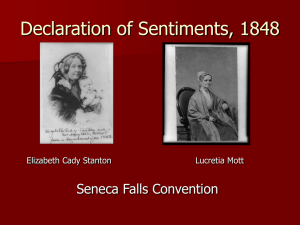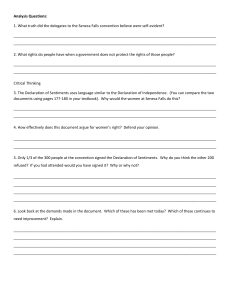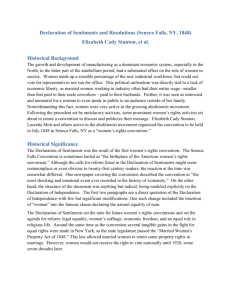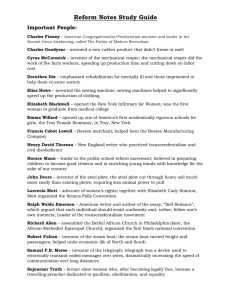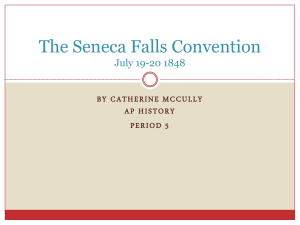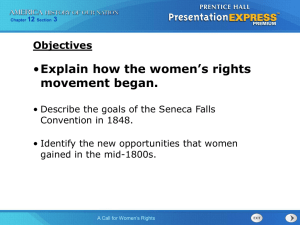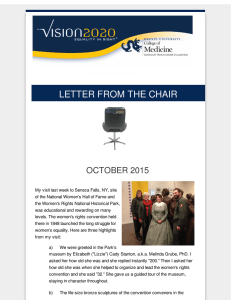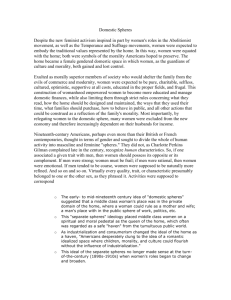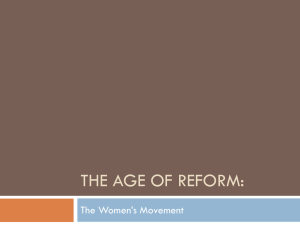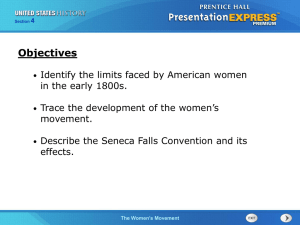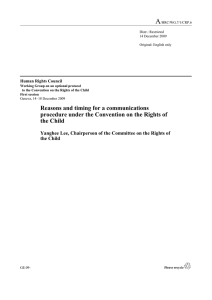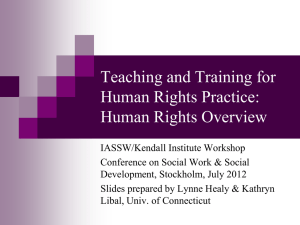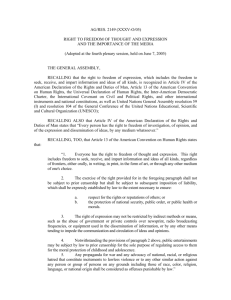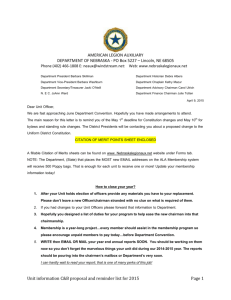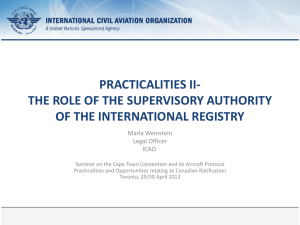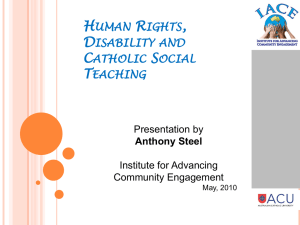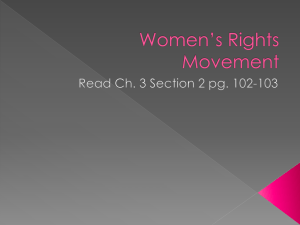Early Women`s Movement
advertisement
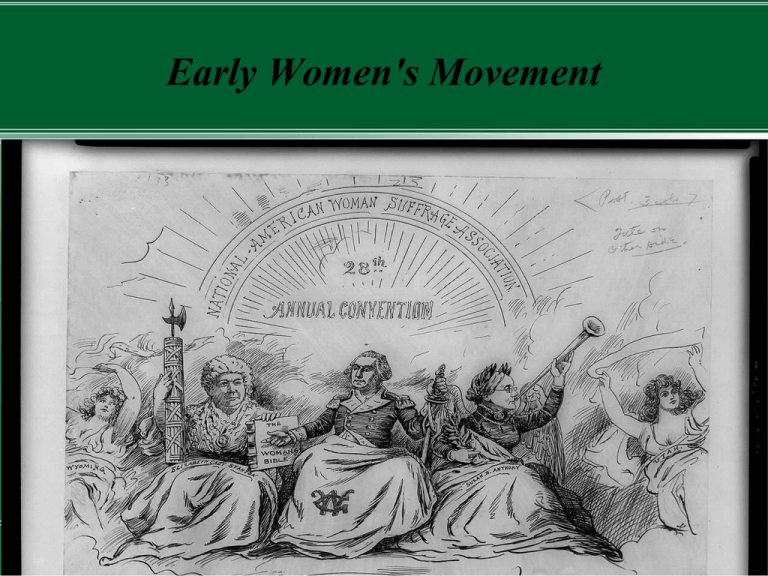
Early Women's Movement Cult of Domesticity Prior to the market revolution, many goods were produced at home. Industrial Revolution moved industry from homes to factories. Hence, poor women often left farms to work in large factories Wealthy women were not expected to go to work or get educations. As middle class families became wealthier, they were able to hire domestic servants to perform household chores that women previously did. It became expected of middle class women to stay home and endow children with 'republican values.' Some women became active church members. “Cult of Domesticity” Women expected too be “submissive, selfless, and emotional.” Men expected to be “rational, aggressive, and domineering.” Women thought unfit for participation in government. Not allowed to vote The property of married women belonged to their husbands. Public Avenues Literacy among women doubled between 1780 and 1840. Barred from higher education Factory work Teaching Staying at home Lucy Stone Gave lectures beginning in 1847 in Gardner Massachusetts. Her lectures dealt primarily with women's rights Attacked by audience many times Refused to pay taxes because she was not represented in the government. Lucy Stone First Woman in Massachusetts to earn a college degree. First woman in United States not to change her name when she was married. She and her husband, Henry Blackwell, published a protest, enumerating marriage laws granting unequal the husband “injurious and unnatural superiority... which no man should possess”. Amelia Bloomer Owner and editor of, “The Lily,” the 1st newspaper who's audience was specifically women. Invented 'bloomers' with the idea that women could work while wearing them Submitted a petition to congress asking either that women be represented in the government, or not pay taxes. Sarah Ripley Born in 1793, Boston Massachusetts Self educated scholar (spoke English, Latin, Greek, French, Italian, and German) Teacher and Lecturer First all Women Strike In New York, in 1925, seamstresses organized 1st all women strike, asking for fair wages, good working conditions, and equal job opportunities Inspired many future strikes in following years. 1840 World Anti-Slavery Society Convention Large abolitionist convention held in London Women excluded from speaking. Required to be behind a curtain so no one could see them. 1840 World Anti-Slavery Society Convention The abolitionists who were not allowed to speak complained that they were not being treated equally. Seneca Falls Convention First women’s rights convention Attended by about 300 women and some men Created “Declaration of Sentiments and Resolutions” Seneca Falls Convention Organized by Lucretia Mott and Elizabeth Cady Stanton Led to numerous other conventions in other parts of the country. Declaration of Sentiments and Resolutions Used wording from the Declaration of Independence, saying “all men and women are created equal.” List of Grievances: No voting rights, no right for married women to wages or property, no rights in divorce, unequal employment opportunities.. Bibliography Howard Zinn, A People's History of The United States Eric Foner, Give Me Liberty! Christopher Clark, Nancy Hewitt, Joshua Brown, David Jaffee, Who Built America? http://www25-temp.uua.org http://www2.kenyon.edu/khistory/frontier/ameliablo omer.htm Bibliography Elizabeth Cady Stanton, “Declaration of Sentiments and Resolutions” Seneca Falls Convention Marriage Protest of Lucy Stone and Henry Blackwell (May 1, 1855)
